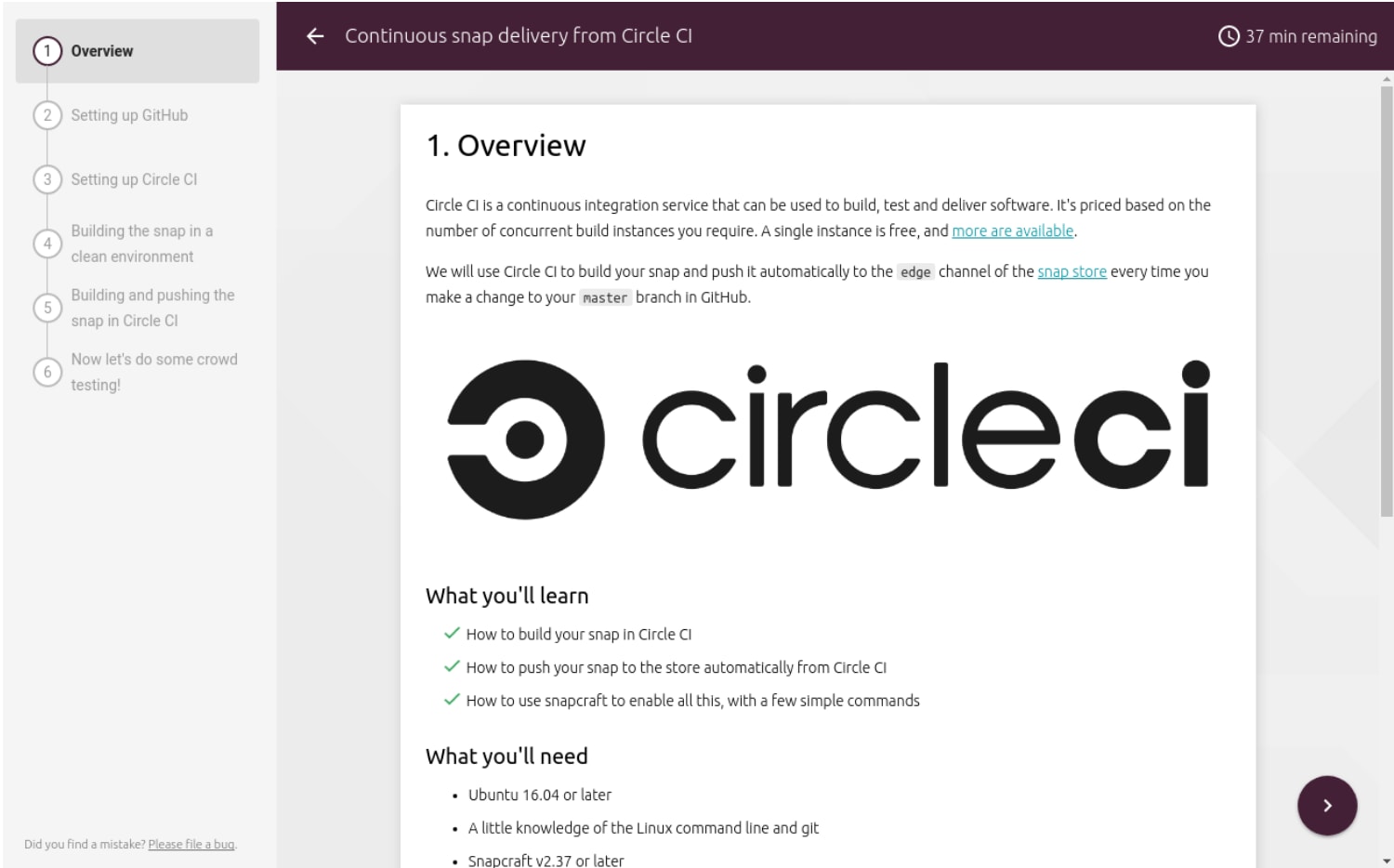Tutorial: Continuous delivery of snaps with Circle CI
David Callé
on 19 January 2018
Bullet-proof continuous delivery of software is crucial to the health of your community, more than a way to run manual tests, it also enables your early adopters to test code and give feedback on it as soon as it lands. You may be already using build.snapcraft.io to do so for snaps, but in some cases, your existing tooling needs to prevail.

Enabling Circle CI for snaps
In this tutorial, you will learn how to use Circle CI to build a snap and push it automatically to the edge channel of the Snap Store every time you make a change to your master branch in GitHub.
What you’ll learn
- How to build your snap in Circle CI
- How to push your snap to the store automatically from Circle CI
- How to use snapcraft to enable all this, with a few simple commands
Talk to us today
Interested in running Ubuntu in your organisation?
Newsletter signup
Related posts
TurtleBot3 OpenCR firmware update from a snap
The TurtleBot3 robot is a standard platform robot in the ROS community, and it’s a reference that Canonical knows well, since we’ve used it in our tutorials....
Snapcraft 8.0 and the respectable end of core18
‘E’s not pinin’! ‘E’s passed on! This base is no more! He has ceased to be! ‘E’s expired and gone to meet ‘is maker! ‘E’s a stiff! Bereft of life, ‘e rests in...
ROS architectures with snaps
Choosing the right architecture can be hard, but we want to help. In this blog, we’ll look at different architectures and their pros and cons. We’ll also show...
